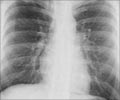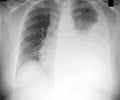A new study has revealed that there may be 650,000 annual cases of tuberculosis (TB) in children.

“One of the key products of this collaboration has been a global consultation on disease estimation of childhood TB and quantification of the drug market size. One objective of the consultation was to further develop analytical tools for disease burden estimation. We commissioned work with a number of research groups (and Peter’s group was one of those) to think outside the box and come up with alternative approaches to come up with improved estimates of the burden of childhood TB. ”
Brief recap of the Lancet study
The study, funded by UNITAID and USAID, aimed to estimate the incidence of TB infection and disease in children less than 15 years. Within a mechanistic mathematical model, estimates of adult TB prevalence in 2010, in the 22 countries with a high burden of the disease, were combined with aspects of the natural history of paediatric TB. Household exposure and infection were also estimated, accounting for the effects of age, BCG vaccination, and HIV infection.
Findings
In 2010, the median number of children estimated to be sharing a household with an individual with infectious TB was 15,319,701. The median number of MTB infections in children was 7,591,759 and 650,977 children developed the disease. The findings suggest that in 2010, 35% of paediatric cases of TB in the 15 countries reporting notifications by age were detected. India alone is predicted to account for 27% of the total burden of paediatric TB in the 22 countries. The predicted proportion of TB burden in children for each country correlated with incidence, varying between 4% and 21%.
Advertisement
Dr Peter J Dodd spoke about the strengths and weaknesses of the model used in this study.
Advertisement
(i) this model does not use notifications in children (which we have good reasons to believe are short of true incidence and are poorly understood), and
(ii) it is a model with lots of stages along the way to disease, including exposure and infection, and it allows to generate many more outputs. The weakness is that we have to make many assumptions, each of which require some data that is imperfectly known to the informant.”
Dr Cherise Scott, Head of paediatric TB programme at TB Alliance, stressed upon the need for accurate estimates of paediatric TB burden to understand the magnitude of the problem, as well as the location of the problem in order to know where we need to work the hardest to ensure that appropriate treatment is available for children suffering with TB. Understanding the magnitude of the problem will also compel policy makers, donors and other decision makers to invest resources in this area.
She said that, “Understanding the burden of childhood TB is very complicated. We tend to miss many cases because—children are not brought into the clinic, or children are misdiagnosed for pneumonia and malnutrition. While physicians and community workers often fail to check for TB when they come across a child who has fever/cough/low weight, we also do not have a good confirmatory test for clinical diagnosis of TB in a child. If we can improve in these areas, we will be closer to having an accurate picture of paediatric TB burden.”
“More people are now aware of childhood TB, many governments want to understand the problem in their specific context and are willing to partner and work with entities like the WHO and TB Alliance to improve their assessment and reporting of childhood TB. This is a great first step to identifying and reaching as many children affected by TB as we can, so that we can get them on treatment. TB is a curable disease and if we find children exposed to, or infected with TB, they can be treated and their lives can be saved.”
One of the major challenges in tackling childhood TB is to understand the scope of the problem. Results of this study will be taken into consideration and will be used for updating the estimates of childhood TB in the upcoming 2014 WHO Global TB report. Additionally, more research is expected and needed in order to even further define the paediatric TB landscape. Accurately quantifying the size of the market and burden of disease among children is necessary to understand the real demand for paediatric TB treatment and inform manufacturers’ efforts. Equally important is to understand the market dynamics that influence uptake and appropriate use of products. All of this will benefit from better epidemiological data in children.
Reference: Shobha Shukla, Citizen News Service (CNS)
Source-Medindia















